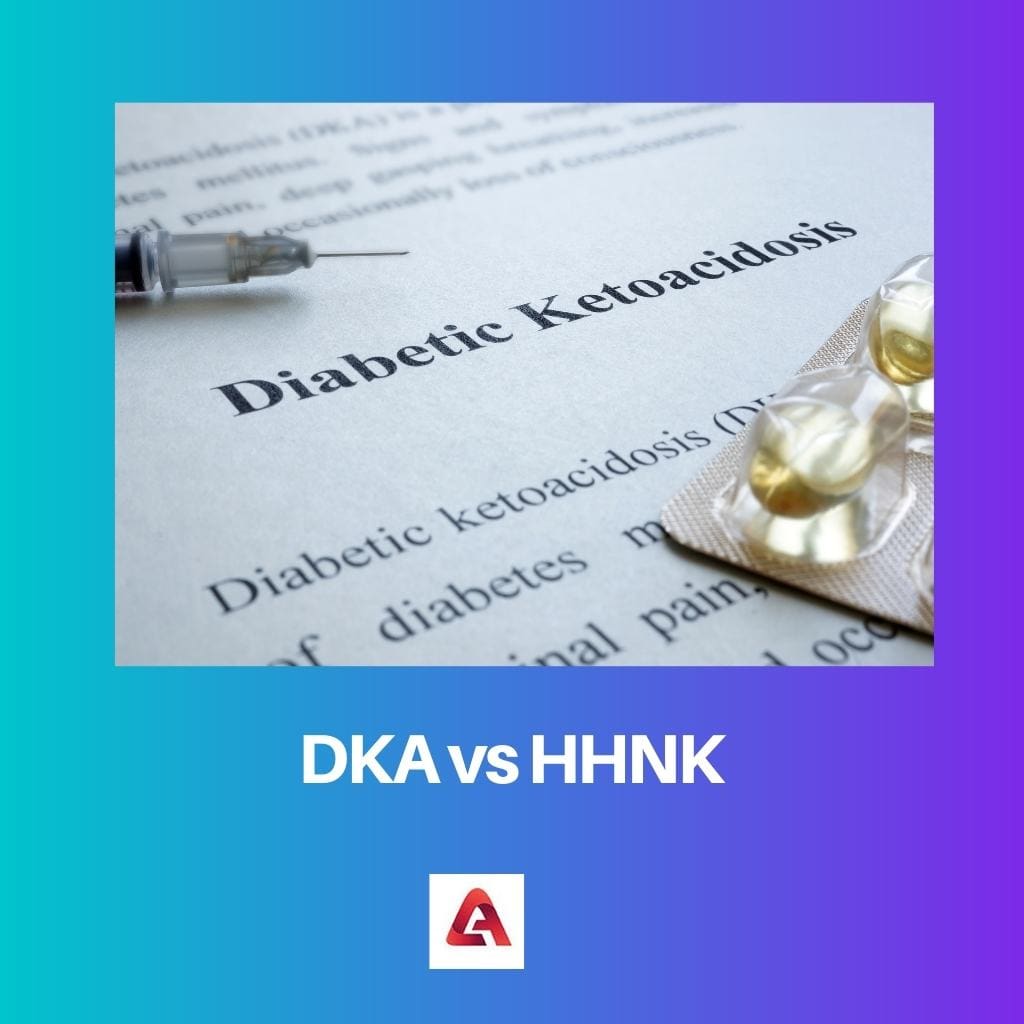Diabetes is something that everyone is scared of. Diabetes and human relationship from ages.
And much humans fear having diabetes, but we don’t know that most diabetes comes from an unbalanced intake of unhealthy food in the long run. We have a good diet, and if we have a good workout plan, we may be able to keep fit more than sick.
Diabetes is a disease that results in high blood sugar levels. Normally, insulin in the human body extracts sugar from the blood and transfers it to cells to store it and use it as a form of energy.
But, while having diabetes, insulin in our body rejects the sugar to transfer it from blood to cell, yet it remains in our blood, resulting in high blood sugar levels.
Diabetics Ketoacidosis (DKA) and Hyperosmolar Hyperglycemic Non-Ketoacidosis (HHNK) is the type of medical emergencies that are observed in diabetic patient. Both of them are a life-threatening disease that keeps patient lives in danger.
Key Takeaways
- DKA is a severe complication of diabetes caused by high levels of ketones in the blood, while HHNK is a life-threatening complication caused by extremely high blood sugar levels.
- DKA is more common in people with type 1 diabetes, while HHNK is more common in people with type 2 diabetes.
- DKA can be treated with insulin and fluids, while HHNK requires immediate medical attention and treatment to prevent serious complications such as coma or death.
DKA vs. HHNK
DKA (Diabetic Ketoacidosis) is a potentially life-threatening complication that occurs when the body produces high levels of ketones. HHNK, also known as HHS (Hyperosmolar Hyperglycemic State), is a condition that occurs when blood glucose levels become extremely high, above 600 mg/dL.

Comparison Table
| Parameters of Comparison | Diabetics Ketoacidosis (DKA) | Hyperosmolar Hyperglycemic Non-Ketoacidosis (HHNK) |
|---|---|---|
| Nature of illness | Diabetics’ Ketoacidosis (DKA) affects the person who is diabetic. | Hyperosmolar Hyperglycemic Non-Ketoacidosis (HHNK) rarely affects who is a diabetic patient. |
| Severity of illness | Diabetics’ Ketoacidosis (DKA) is less dangerous. | Hyperosmolar Hyperglycemic Non-Ketoacidosis (HHNK) is very dangerous. |
| Period | Diabetics’ Ketoacidosis (DKA) works quickly; hence, symptoms are observed quickly. | Hyperosmolar Hyperglycemic Non-Ketoacidosis (HHNK) works slowly; hence, symptoms are observed for a long time. |
| Effects on Patient | Effects of Diabetics Ketoacidosis (DKA) on Patients are high blood pressure and sugar content. | Effects of Hyperosmolar Hyperglycemic Non-Ketoacidosis (HHNK) can be seen in Patients from strokes, coma, and death. |
| Symptoms | Symptoms of Diabetics Ketoacidosis (DKA) are a sudden urge to drink water, vomiting, nausea, and urination several times a day. | Hyperosmolar Hyperglycemic Non-Ketoacidosis (HHNK) symptoms include a sudden urge to drink water even when not thirsty, urination several times a day, concentrated specific dark-colored urine, and dehydration. |
| Medications | Medications for Diabetics Ketoacidosis (DKA) are medicine and precautions. | Medications for Hyperosmolar Hyperglycemic Non-Ketoacidosis (HHNK) are medicines and surgery. |
What is Diabetic Ketoacidosis (DKA) ?
DKA is fully known as Diabetic Ketoacidosis, a medical emergency in diabetes that is observed in the patient’s body quickly and works at a high pace.
Diabetic Ketoacidosis (DKA) is a common illness found in diabetic patients. Diabetic Ketoacidosis (DKA) can be found in symptoms like high blood pressure and high blood sugar levels followed by nausea, vomiting, the urge to drink more water, and urination daily.
What is Hyperosmolar Hyperglycemic Non-Ketoacidosis (HHNK)?
HHNK is fully known as Hyperosmolar Hyperglycemic Non-Ketoacidosis, which is a medical emergency in diabetes that is observed in the patient’s body after a long period and works at a slow pace.
Hyperosmolar Hyperglycemic Non-Ketoacidosis (HHNK) is also known as Hyperosmolar Hyperglycemic Non-Ketotic Syndrome (HHNKS). Hyperosmolar Hyperglycemic Non-Ketoacidosis (HHNK) is a rare illness in diabetic patients.
Symptoms like dehydration can be found in Hyperosmolar Hyperglycemic Non-Ketoacidosis (HHNK), more urination a day, urge to drink more water even when not thirsty, followed by strokes, followed by strokes, coma, and eventually death.
Main Differences Between Diabetic Ketoacidosis (DKA) and Hyperosmolar Hyperglycemic Non-Ketoacidosis (HHNK)
- Diabetic Ketoacidosis (DKA) is less dangerous, whereas Hyperosmolar Hyperglycemic Non-Ketoacidosis (HHNK) is more dangerous.
- Diabetic Ketoacidosis (DKA) can be cured by proper diet and precautions, whereas proper medications are mandatory for Hyperosmolar Hyperglycemic Non-Ketoacidosis(HHNK).
- Diabetic Ketoacidosis (DKA) is a common illness found in diabetic patients, whereas Hyperosmolar Hyperglycemic Non-Ketoacidosis (HHNK) is a rare illness found in diabetes.
- Diabetic Ketoacidosis (DKA) is observed from high blood pressure and sugar levels, whereas Hyperosmolar Hyperglycemic Non-Ketoacidosis (HHNK ) is observed from stroke, coma, and eventually death.
- Diabetic Ketoacidosis (DKA) shows symptoms in the short run, which works at a fast pace. In contrast, Hyperosmolar Hyperglycemic Non-Ketoacidosis (HHNK) shows symptoms in the long run, which works at a slow pace.
- Diabetic Ketoacidosis (DKA) is observed with ketoacidosis and a fruity odor from the mouth. In contrast, Hyperosmolar Hyperglycemic Non-Ketoacidosis (HHNK) is observed without ketoacidosis and with no odor change.



